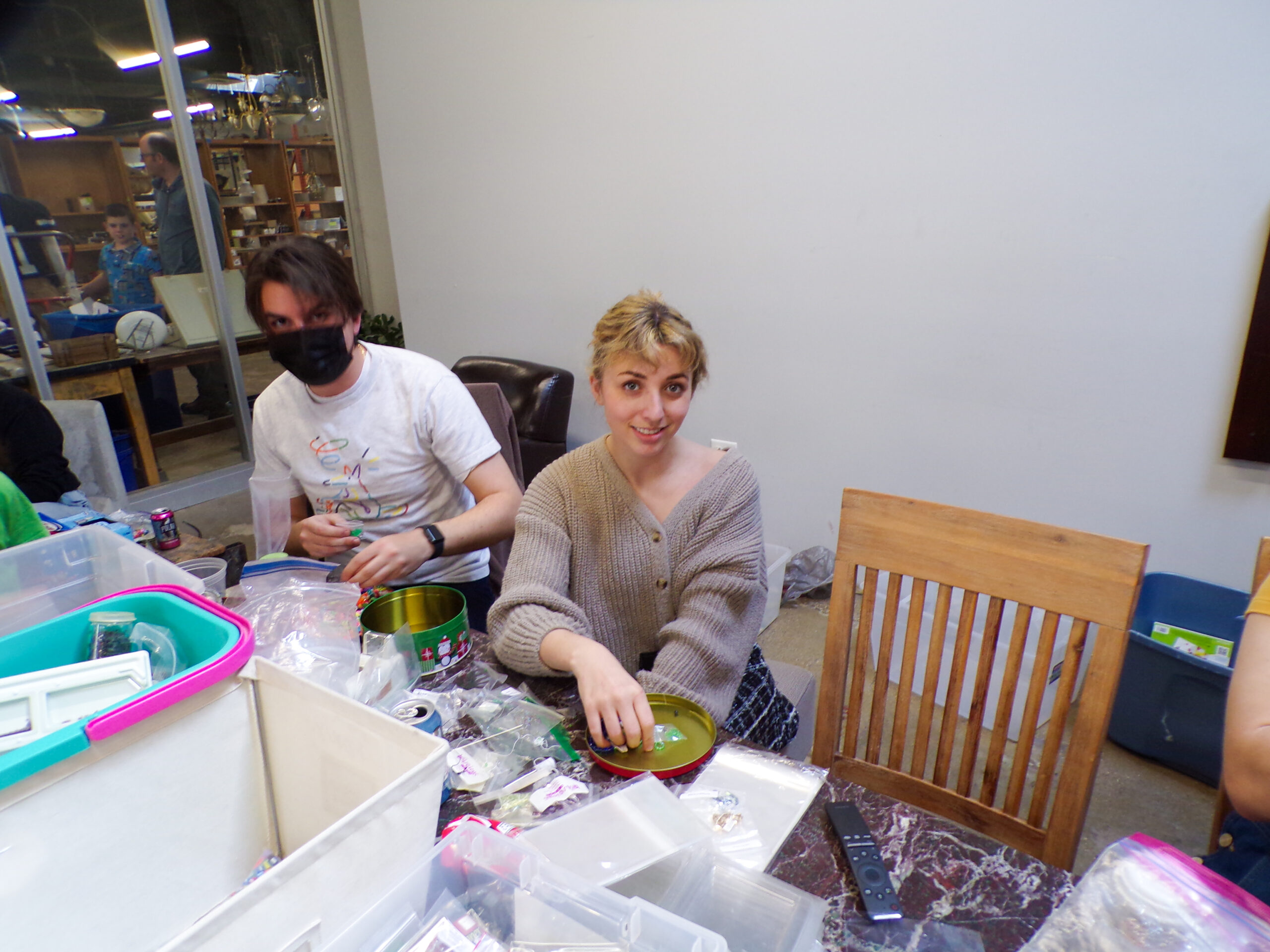Loyola’s Campus Facilities aim to reduce the environmental impact of de-icing salt by using a standardized depositing method and hopes to partner with SES to create a salt-brine solution.
Campus Facilities said they are looking to partner with Loyola’s School of Environmental Sustainability (SES) to create a more sustainable road de-icing salt solution.
Hamlet Gonzalez, assistant vice president for Loyola’s Facilities and Campus Planning, said Campus Facilities utilizes road de-icing salt and shoveling to clear snow and ice from campus property. However, road-deicing salt has been proven harmful to people and the environment.
Brian Ohsowski, an assistant professor in the SES, explained why road de-icing salt is harmful to the environment.
When road salt is distributed on sidewalks and roads, it often goes into ditches and stormwater drainage systems, which connect to waterways Ohsowski said. From there, road salt deposits into bodies of water, such as sources of drinking water.
A recent study found road de-icing salts create an increase in freshwater salinity in cold-weather regions in the United States, eventually contaminating drinking water.
Brian Ohsowski, an assistant professor in the School of Environmental Sustainability, explained how salt ends up in bodies of water.
“Whereas water can evaporate, road de-icing salt does not disappear,” Ohsowski said. “Rather, road salt will be part of surface runoff or it will collect on the side of roads.”
When road salt comes in contact with water, the contents separate, due to the polarity of water. This leads to road salt dissolving into freshwater sources.
“A lot of general road salt contains chemicals such as calcium chloride, magnesium chloride, sodium chloride which separates when in contact with water due to water’s polarity,” he said.
Ohsowski said the presence of sodium in drinking water poses a threat for people as it will dehydrate humans and other organisms. Chloride’s maximum contaminant level goal is zero— meaning there shouldn’t be any presence of chloride found in drinking water, according to the Environmental Protection Agency.
At Loyola, snowfall and rainfall deposits into Lake Michigan through stormwater drains and the paving system in many sidewalks.
In the fiscal year 2022, Campus Facilities accumulated 155.65 total tons of de-icing road salt. Of the brands of road salt purchased by the university, Gonzalez said there is a mix of anti-corrosive, general and pet-friendly road salts.
“The university’s amount of road salt heavily depends on the snow season,” Gonzalez said.
Unused road salt is kept in a closed-storage facility along with other equipment, Gonzalez said.
When asked if Campus Facilities has considered alternatives to de-icing road salt, Gonzalez said Loyola has used beet juice mixed with salt in the past, but could not continue due to lack of supply.
Beet juice has proven a successful, more sustainable de-icing method, according to the Missouri Department of Transportation. Beet juice allows a salt brine solution to de-ice roads at a lower temperature and does not contain chemicals harmful to drinking water.
“I think the beet juice was a good option, but it was not widely available and was carried at a premium price,” he said.
However, Gonzalez said he hopes to partner with Loyola’s SES to create a salt brine, a more sustainable alternative to road salt.
“I am relatively new, but I would like to initiate a partnership with SES because salt brine would reduce our salt consumption by 25%,” he said.
Salt brine is a liquid de-icing solution to pre-treat icy roads up to 48 hours before a storm, according to the National League of Cities.
Currently, the city of Evanston uses a salt brine mixture which contains a solution of about 22.5 and 23.3% salt to water.
In the meantime, Gonzalez said there are other measures Campus Facilities uses to reduce the amount of road-salt used. One way to reduce the amount of salt distributed is the method of distribution. Rather than distributing salt by hand, Campus Facilities distributes road de-icing salt at a standardized rate.
“Road salt is distributed by a machine on our vehicles because hand spreading is typically the easiest way to overdo it,” Gonzalez said.
Although the rate of discharge depends on the speed of the vehicle, Gonzalez said Campus Facilities attempts to distribute 2.3 to 6.8 pounds of road salt per 1000 square feet. Campus Facilities first removes snowfall with shovels to limit the amount of road salt distributed on campus grounds, according to Gonzalez.
“Salt is not our go-to method to ensure Loyola’s grounds are safe for students,” Gonzalez told The Phoenix. “To get rid of salt, we physically shovel or scrape the snow to limit the amount of road salt we are using.”
After Campus Facilities removes excess snow, road salt is used to melt any remaining ice. In addition, Gonzalez said they watch the weather forecast rather than a fixed schedule to determine how often road salt should be distributed.
“We have to analyze forecasts and the temperature of asphalt to determine whether or not road salt will be an effective way to de-ice campus grounds,” Gonzalez said.
Loyola’s Lake Shore Campus includes over 30 acres of land, all of which must be serviced by Campus Facilities, according to Loyola’s Community Relations.
“Whether it’s a lot that is vacant or a parking lot or a residence hall or an academic building, we are responsible for any Loyola property,” Gonzalez said.
Another aspect workers must keep in mind when de-icing campus is the mobility of students. To ensure students in wheelchairs or crutches can safely navigate campus Gonzalez said Loyola’s Facilities begin de-icing popular walking locations first.
“Our big concern is mobility because we cannot assume everyone walking on campus has the same mobility,” Gonzalez said. “We start at the West Quad and fan out way out because our highest priorities are the academic buildings and residential halls.”
Although Campus Facilities utilize a system to evenly distribute road de-icing salt, there are instances where salt is unevenly deposited in one area. Gonzalez said workers must often let pedestrians pass, creating an accumulation of road salt in one area.
However, Gonzalez urges students to submit a request for service in areas where piles of salt have accumulated.
Featured image by Holden Green | The Phoenix












